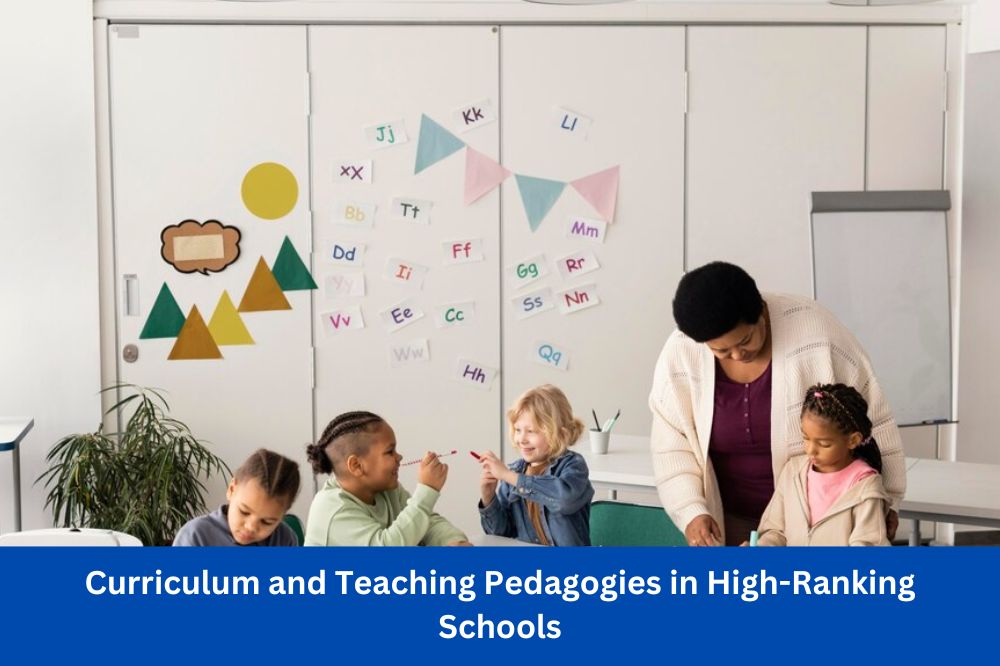Introduction:
A well-structured curriculum and innovative teaching methodologies play a crucial role in shaping the educational experience of students. Institutions that consistently rank among the top ensure a balance between academic rigor and holistic development. At Banyan Tree School Chandigarh, the Best Schools in Chandigarh where by integrating modern pedagogical approaches, these schools create an engaging and enriching learning environment. This article explores various curriculum structures and teaching strategies employed by leading institutions.
Understanding the Curriculum Framework
Academic institutions adopt different curricula to cater to diverse learning needs. Some of the prominent frameworks include:
- Central Board of Secondary Education (CBSE): Focuses on a structured syllabus with an emphasis on conceptual clarity and standardized assessments.
- Indian Certificate of Secondary Education (ICSE): Offers a detailed syllabus with a strong focus on language proficiency, analytical skills, and overall development.
- International Baccalaureate (IB): Promotes inquiry-based learning and international-mindedness through interdisciplinary approaches.
- Cambridge International (IGCSE): Encourages independent thinking, creativity, and application-based learning.
Each curriculum has its unique attributes, and institutions align their academic structure with one that best suits their educational philosophy.
Teaching Pedagogies that Foster Holistic Learning
1. Experiential and Inquiry-Based Learning
Leading institutions integrate experiential learning methods to bridge the gap between theoretical knowledge and practical application. Techniques such as field trips, real-world projects, and hands-on experiments enable students to grasp concepts more effectively.
2. Technology-Integrated Classrooms
Digital transformation in education has paved the way for smart classrooms equipped with:
- Interactive whiteboards
- AI-powered assessment tools
- Virtual and augmented reality modules
- Online learning platforms
These tools help students visualize complex topics, engage actively in lessons, and enhance their learning experience beyond textbooks.
3. Project-Based and Collaborative Learning
Institutions emphasize collaborative projects that enhance teamwork, problem-solving skills, and creative thinking. Students work on real-world challenges, participate in STEM-based activities, and present their findings, encouraging independent research and critical analysis.
4. Flipped Classroom Model
A revolutionary approach adopted by many high-ranking institutions, the flipped classroom model allows students to explore concepts at home through pre-recorded lectures and multimedia content. Classroom time is then utilized for discussions, doubt resolution, and hands-on activities.
5. Differentiated Instruction for Personalized Learning
Recognizing the varied learning paces of students, top institutions adopt differentiated instruction strategies:
- Customized lesson plans
- Individualized learning tracks
- AI-powered progress tracking
- One-on-one mentoring sessions
This approach ensures that every student receives the necessary support and guidance to excel academically.
Integration of Co-Curricular and Extracurricular Activities
Beyond academics, holistic development is a key focus area for leading institutions. A well-rounded education includes:
- Sports and Physical Education: Structured athletic programs to promote teamwork, discipline, and fitness.
- Arts and Creative Expression: Music, dance, drama, and visual arts to enhance creativity and self-expression.
- Leadership and Social Responsibility: Student-led initiatives, clubs, and community service programs to instill leadership skills and civic awareness.
Assessment and Evaluation Strategies
Modern institutions employ a variety of assessment techniques beyond traditional examinations, including:
- Continuous formative assessments
- Portfolio-based evaluations
- Open-ended projects and presentations
- Peer and self-assessments
These strategies offer a comprehensive understanding of a student’s progress, strengths, and areas for improvement.
Parental Involvement and Communication
Effective communication between educators and parents ensures a collaborative approach to a child’s learning journey. Top schools implement:
- Regular parent-teacher meetings
- Digital progress reports
- Interactive workshops
- Open-house discussions
Parental engagement in school activities fosters a sense of community and strengthens the educational framework.
Faculty Development and Training
Educators play a crucial role in implementing innovative pedagogies. Institutions invest in:
- Regular teacher training workshops
- International teaching certifications
- Research-based pedagogical enhancements
- Exchange programs for global exposure
Continuous professional development ensures that faculty members remain updated with the latest teaching strategies and educational advancements.
Career Guidance and Future Readiness
High-ranking institutions equip students with career counseling and skill development programs to prepare them for future endeavors. Key initiatives include:
- Industry mentorship programs
- Entrepreneurship incubation centers
- Resume-building and interview preparation sessions
- College and scholarship guidance
This ensures that students make informed career choices and transition seamlessly into higher education or professional domains.
Conclusion
The success of top educational institutions lies in their commitment to dynamic curriculum structures and innovative teaching methodologies. By integrating experiential learning, technology-driven instruction, and personalized guidance, they create an environment conducive to academic excellence and overall development. At Banyan Tree School Chandigarh, the Top Schools in Chandigarh where a well-rounded approach to education ensures that students are prepared not just for examinations but for real-world challenges and lifelong success.

